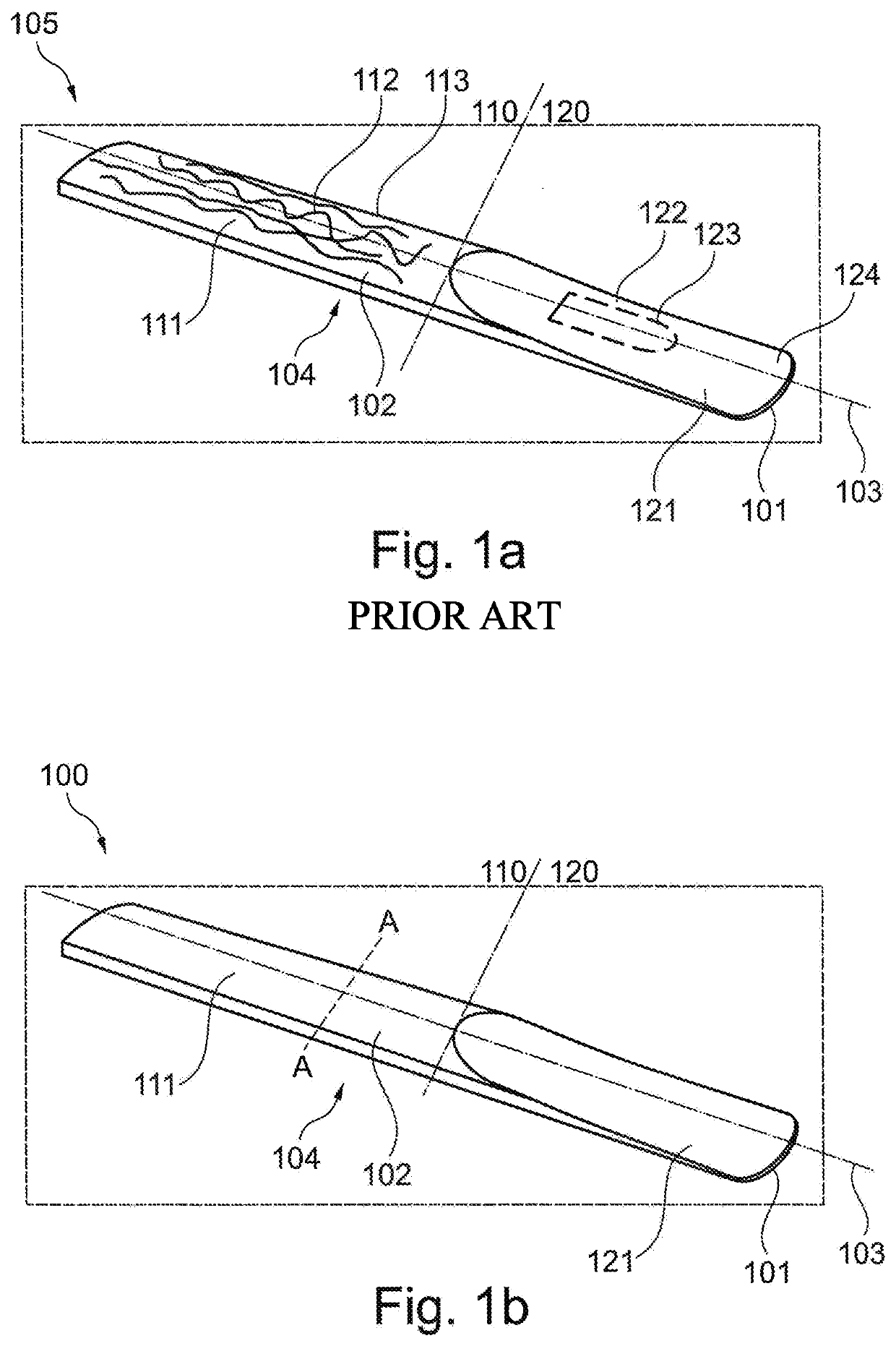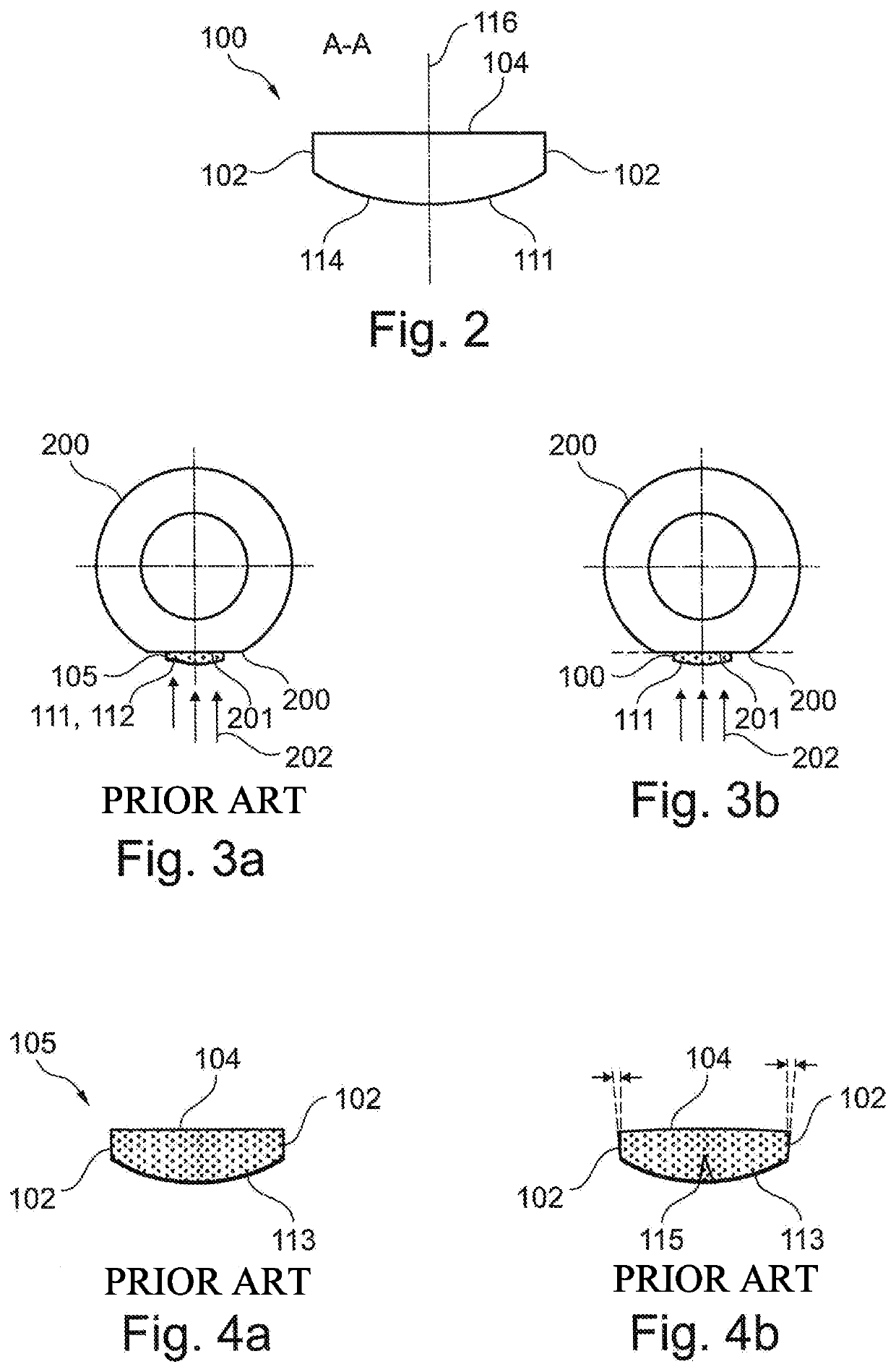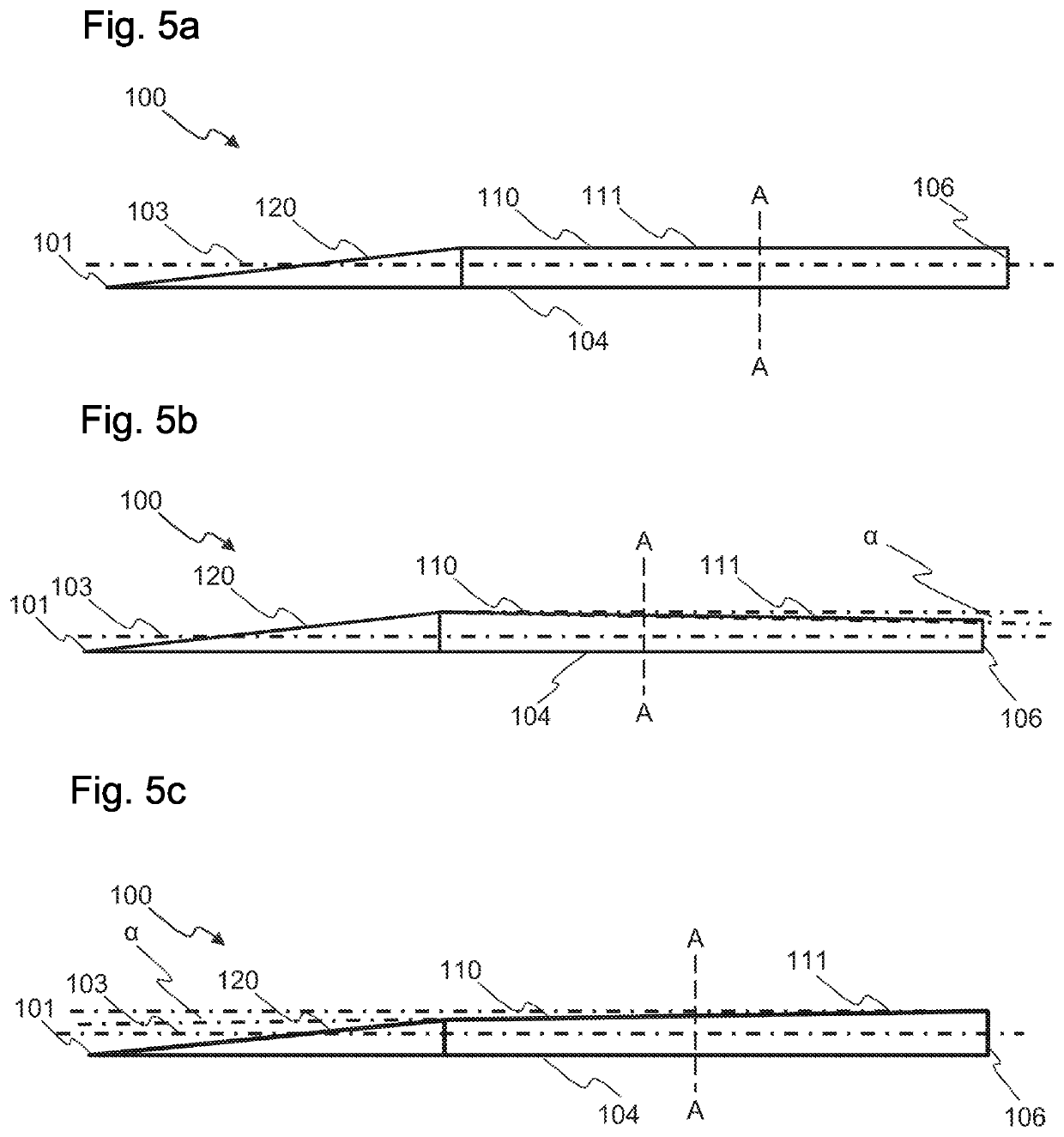Precision Reed Made Of Wood Or Arundo Donax
- Summary
- Abstract
- Description
- Claims
- Application Information
AI Technical Summary
Benefits of technology
Problems solved by technology
Method used
Image
Examples
Embodiment Construction
[0044]FIG. 1a shows a reed blank 105, in which the reed leading edge 101, the side walls 102, the support wall 104 and the cutout 121 are very precisely cut depending on the desired type, while the clamping section 110 of the reed blank 105, in particular the reed back 111, is left natural. It is well known that in nature there is neither a right angle nor exactly flat surfaces or even symmetrical radii. As a result of the reed bark 113, unevenness 112 is present on the unmachined reed back 111, both in the longitudinal and in the transverse direction. Originally, the reeds 105 were tied to the mouthpiece 200 (see FIG. 3a) using a fine cord. Traditionalists “wrap” to this day. This type of attachment levels most effectively any unevenness 112 of the reed back 111. That is why the machining of the reed back 111 was considered not to be necessary at the time.
[0045]FIG. 1b enables as a precision reed 100 through the machining of the reed back 111, that is to say, a complete machining o...
PUM
 Login to View More
Login to View More Abstract
Description
Claims
Application Information
 Login to View More
Login to View More - R&D
- Intellectual Property
- Life Sciences
- Materials
- Tech Scout
- Unparalleled Data Quality
- Higher Quality Content
- 60% Fewer Hallucinations
Browse by: Latest US Patents, China's latest patents, Technical Efficacy Thesaurus, Application Domain, Technology Topic, Popular Technical Reports.
© 2025 PatSnap. All rights reserved.Legal|Privacy policy|Modern Slavery Act Transparency Statement|Sitemap|About US| Contact US: help@patsnap.com



